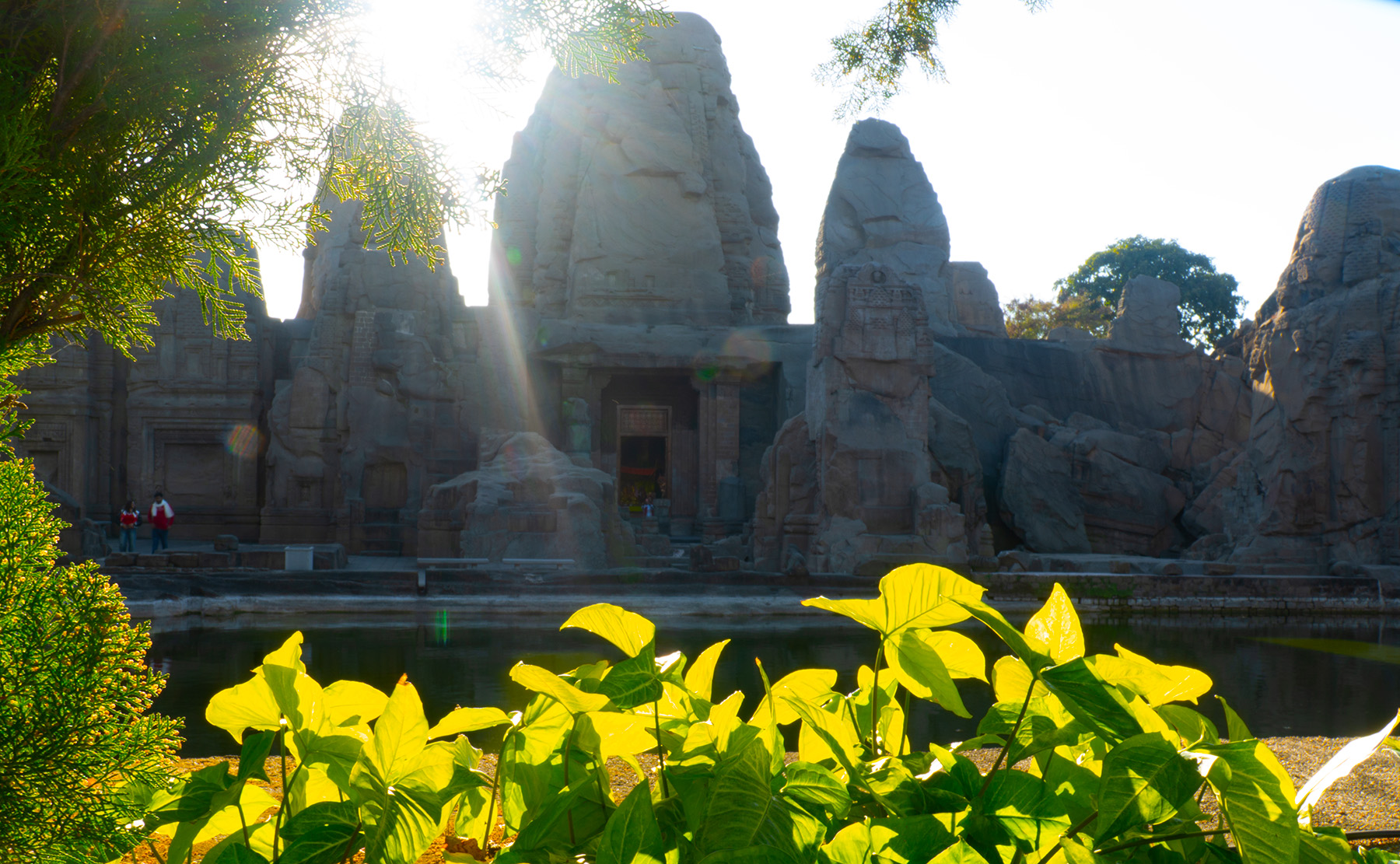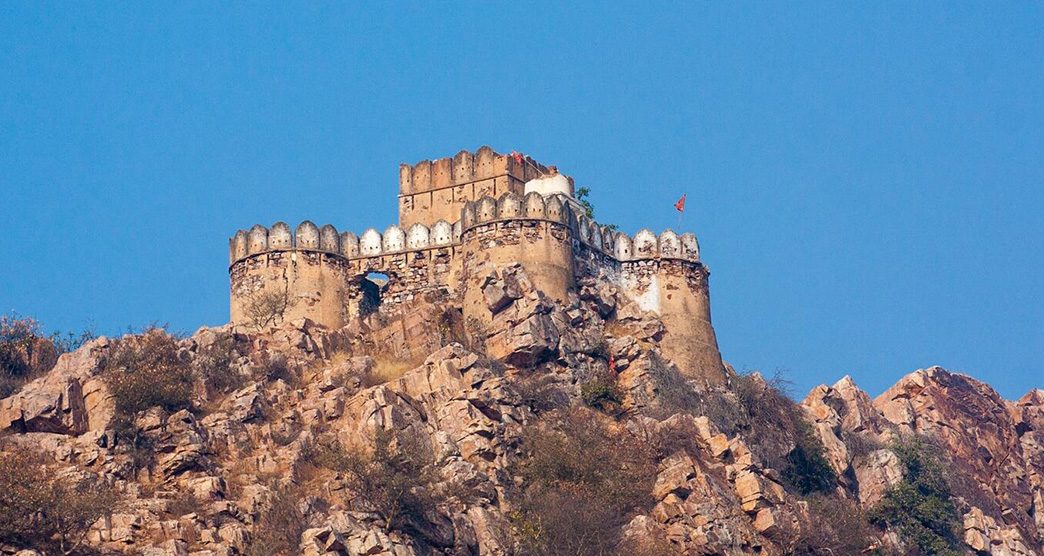The Albert Hall Museum in Jaipur, Rajasthan, is an architectural and cultural marvel that stands as a testimony to India’s glorious past. It is the oldest museum in Rajasthan and serves as the state museum, housing an extensive collection of artifacts, sculptures, paintings, arms, and other historical relics. This blog explores the history, architecture, collections, and significance of the museum, offering a deep dive into its treasures.
Historical Background
The foundation stone of the Albert Hall Museum was laid on February 6, 1876, by the Prince of Wales, Albert Edward, during his visit to Jaipur. Initially planned to be a town hall, Maharaja Sawai Madho Singh II later decided to convert it into a museum dedicated to art and culture. Designed by Sir Samuel Swinton Jacob, a British architect renowned for his Indo-Saracenic architectural style, the museum was opened to the public in 1887.
The idea behind establishing this museum was to educate and inspire local artisans by showcasing an extensive range of artistic and historical collections from across India and beyond. Over the years, it has grown to become one of the most renowned museums in India, attracting history enthusiasts, art lovers, and tourists from all over the world.
Architecture: A Blend of Cultures
The Albert Hall Museum is a magnificent example of Indo-Saracenic architecture, a style that combines Indian, Mughal, and Gothic influences. The structure is built using pink sandstone, complementing the heritage of Jaipur, known as the Pink City. Notable architectural features include:
- Intricate Carvings: The museum boasts ornate carvings on its domes, pillars, and arches, showcasing the craftsmanship of Rajasthani artisans.
- Murals and Frescoes: The walls are adorned with paintings and murals inspired by Mahabharata, Ramayana, and Persian and European influences.
- Grand Domes and Courtyards: The large domes add grandeur to the museum, while the expansive courtyard enhances its elegance.
- Beautiful Corridors and Arches: The museum’s long corridors display various exhibits and are illuminated by natural light, providing an immersive experience.

The design of Albert Hall is heavily influenced by Islamic and Rajputana architecture, giving it a unique and historic appeal. The lighting of the museum at night further enhances its beauty, making it a stunning spectacle to behold.
Collections and Exhibits
The museum houses an extensive range of artifacts collected from different parts of India and beyond. Here’s a breakdown of its major collections:
Sculptures and Figurines
The museum features sculptures and figurines made of clay, metal, silver, brass, copper, bronze, and marble. These date back to various historical periods, including the Gupta, Kushan, Delhi Sultanate, and Mughal eras. The statues of Hindu deities, Jain Tirthankaras, and Buddha highlight India’s spiritual heritage.
Murals and Paintings
The paintings inside the museum include miniature Rajasthani, Mughal, Persian, and European art. Many murals depict scenes from epics like Mahabharata and Ramayana. The museum has a notable collection of Kangra, Bundi, and Kishangarh school of paintings, which illustrate Indian mythology and folklore.
Jewelry and Ornaments
A collection of traditional Rajasthani jewelry, crafted in gold, silver, and precious stones, showcases the intricate craftsmanship of the region. The museum also displays tribal ornaments from Rajasthan and Gujarat, highlighting the distinct regional influences on jewelry design.
Persian Garden Carpet
One of the most famous exhibits is the 17th-century Persian Garden Carpet, considered one of the rarest carpets in the world. It showcases a layout inspired by a garden, featuring animal motifs, floral patterns, and detailed weaving. This carpet is a fine example of Persian artistry that was brought to India during the Mughal era.
Arms and Ammunition
The armory section displays ancient weapons, including:
- Matchlock guns
- Swords and daggers
- Camel-mounted Zamburak (cannons)
- War shields from different eras
- Rajput and Mughal weapons that reflect the warfare traditions of Rajasthan.
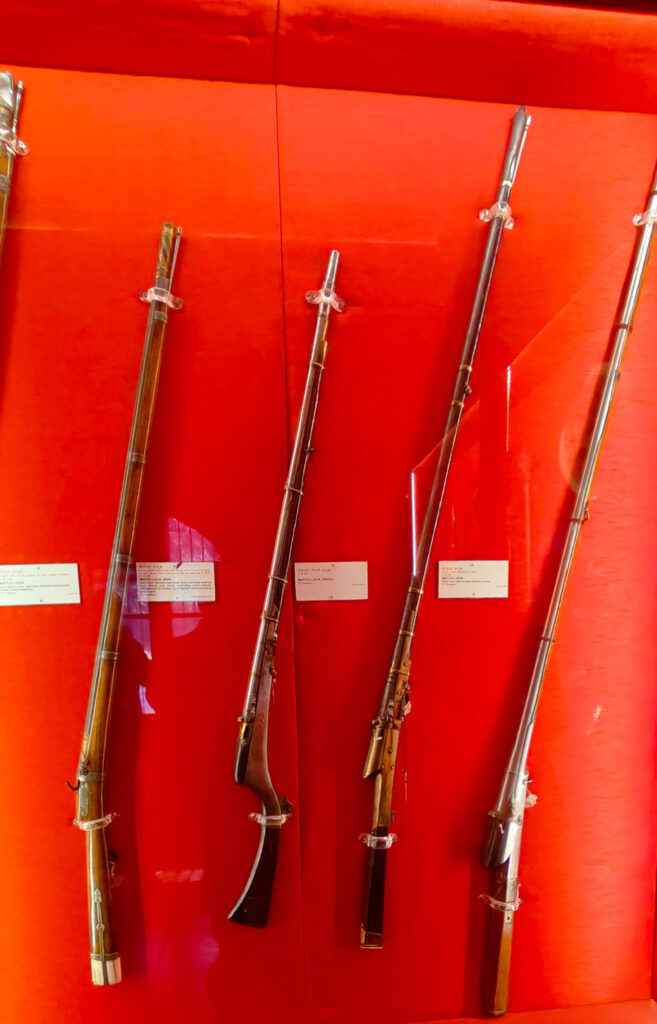
Coin Collections
A rare collection of old coins from different dynasties, including Gupta, Mughal, Rajput, and British India, is housed here, offering insight into India’s monetary evolution. Some coins date back to the 2nd century BCE, making them valuable for historical study.
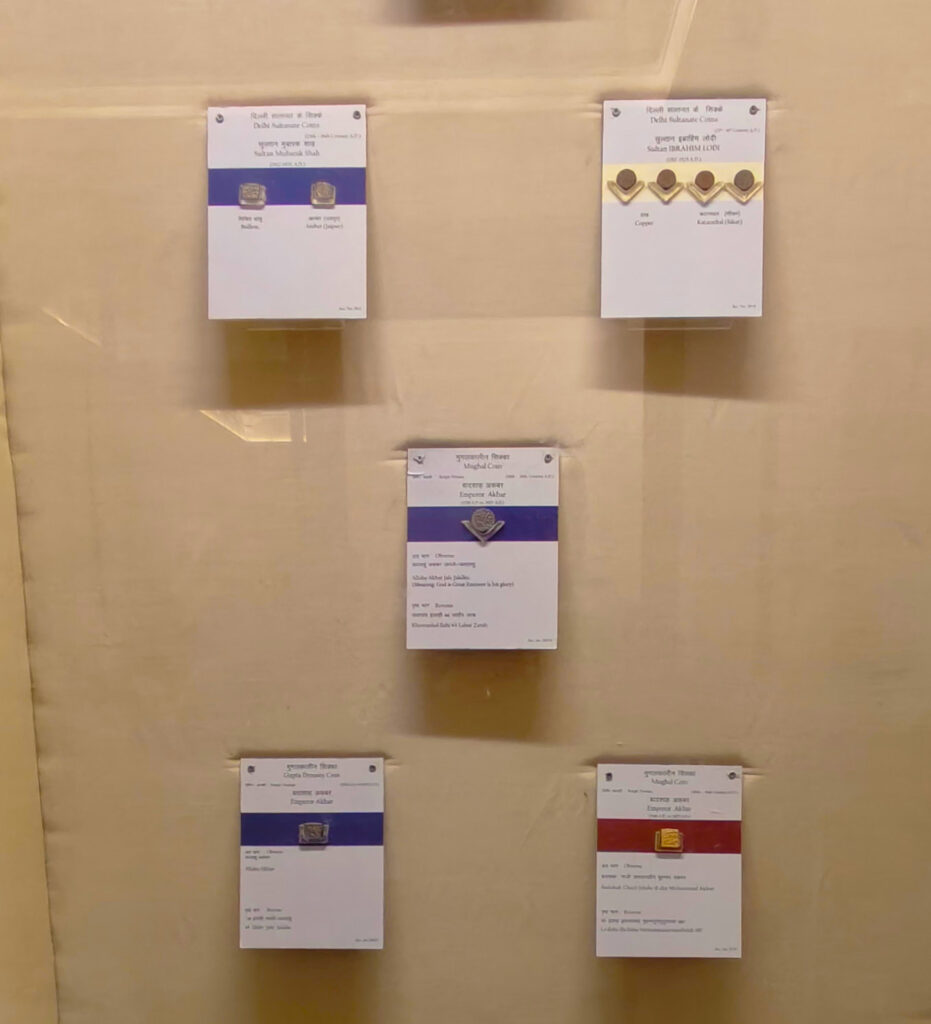
Ancient Textiles and Costumes
The museum exhibits royal costumes, silk robes, and embroidered shawls, reflecting Rajasthan’s textile heritage. The section also includes hand-block printed fabrics, Bandhani (tie-dye) sarees, and Mughal-era garments.
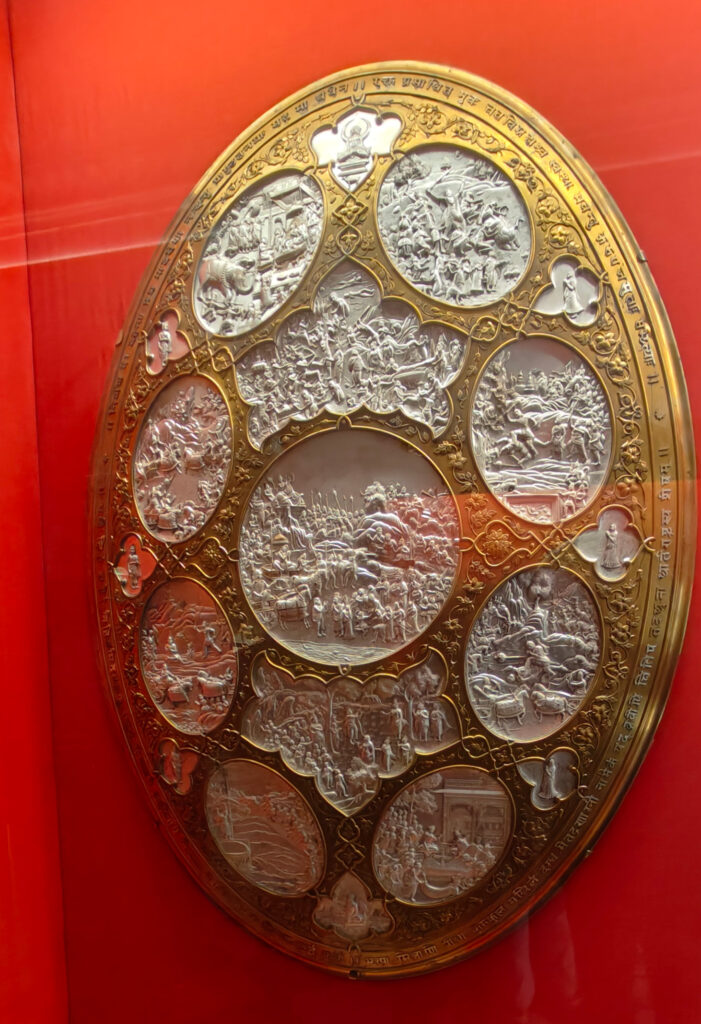
Ivory and Woodwork
- Intricately carved ivory sculptures and wooden artifacts demonstrate the fine detailing in Rajasthani craftsmanship.
International Artifacts
The museum also features artifacts from various international cultures, including objects from Japan, Sri Lanka, Myanmar, Austria, and Germany.
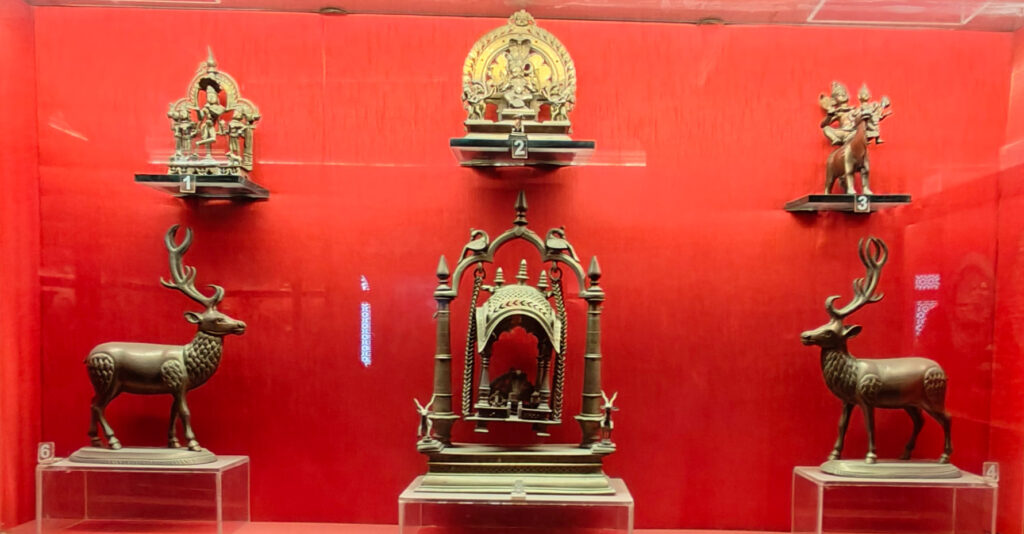
Egyptian Collection (Mummy)
A major attraction is an Egyptian Mummy, which is over 2,000 years old, providing an intriguing glimpse into ancient Egyptian burial traditions.
Visitor Information for Albert Hall
Location
- Albert Hall Museum is located in Ram Niwas Garden, Jaipur, Rajasthan.
- It is near the City Palace and Hawa Mahal, making it an accessible tourist attraction.
Albert Hall Timings
- Opening Hours: 9:00 AM – 5:00 PM
- Night Viewing: 7:00 PM – 10:00 PM
- Closed On: National Holidays
Ticket Prices
- Separate rates for Indian and Foreign Nationals
- Rebate for students on showing ID Card
Distances from Albert Hall to Nearby Tourist Attractions
- Amber Fort – 10.5 km
- Nahargarh Fort – 15.5 km
- Hawa Mahal – 2.5 km
- Jantar Mantar – 3.0 km
- Isarlat – 2.5 km
- Sisodia Rani Bagh – 6.0 km
- Vidhyadhar Garden – 5.5 km
Facilities
- Guided Tours Available
- Photography Allowed (Some sections restricted)
- Nearby Cafés and Souvenir Shops
Conclusion
The Albert Hall Museum is more than just a museum; it is a living testament to India’s historical grandeur. Whether you are a history enthusiast, an art lover, or a curious traveler, this museum is a must-visit destination in Jaipur. Its collections, historical significance, and grand architecture make it an ideal place for understanding the rich cultural heritage of Rajasthan and India. From ancient artifacts to exquisite paintings, every exhibit has a story to tell, making the visit an enriching experience.
This museum is not only a storehouse of history but also an inspiration for generations to come. If you’re in Jaipur, a visit to Albert Hall Museum is highly recommended!


